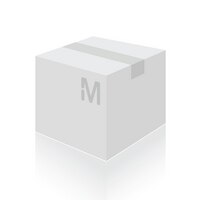QIA95 Sigma-AldrichPhosphoDetect™ EGFR ELISA Kit
Synonymes: Active Epidermal Growth factor Receptor ELISA Kit
Produits recommandés
Aperçu
| Replacement Information |
|---|
Tableau de caractéristiques principal
| Detection Methods |
|---|
| Colorimetric |
| Applications |
|---|
| Biological Information | |
|---|---|
| Assay range | 0.078 - 5.0 fmol/ml |
| Assay time | 2.5 h |
| Sample Type | Human serum or biological samples or cell lysates |
| Physicochemical Information | |
|---|---|
| Sensitivity | 0.078 fmol/ml |
| Dimensions |
|---|
| Materials Information |
|---|
| Toxicological Information |
|---|
| Safety Information according to GHS |
|---|
| Product Usage Statements |
|---|
| Packaging Information |
|---|
| Transport Information |
|---|
| Specifications |
|---|
| Global Trade Item Number | |
|---|---|
| Référence | GTIN |
| QIA95 | 0 |
Documentation
PhosphoDetect™ EGFR ELISA Kit Certificats d'analyse
| Titre | Numéro de lot |
|---|---|
| QIA95 |
Références bibliographiques
| Aperçu de la référence bibliographique |
|---|
| Gamou, S. and Shimizu, N. 1995. FEBS Lett, 357, 161. Gamou, S., et al. 1989. Exp. Cell Res. 183, 197. Glenny, J., et al. 1988. J. Immunol. Methods 109, 277. Hirai, M., et al. 1988. J. Cell Biol. 107, 791. Behzandian, M.A. and Shimizu, N. 1985. Cell Structure and Function 10, 219. Hunter, T. 1984. Nature 311, 414. Barnes, D. 1982. J. Cell Biol. 93, 1. |
Brochure
| Titre |
|---|
| Protein Kinase Assay and Detection Kits Brochure |







